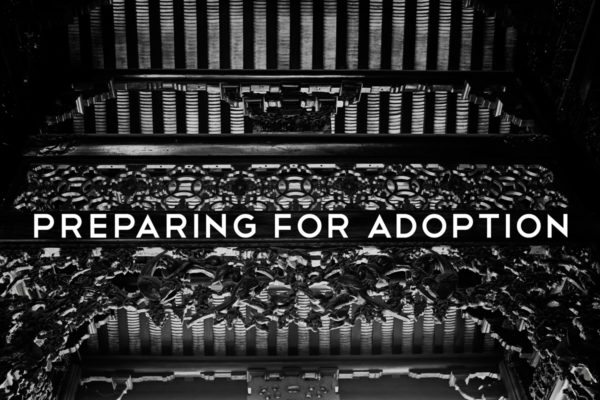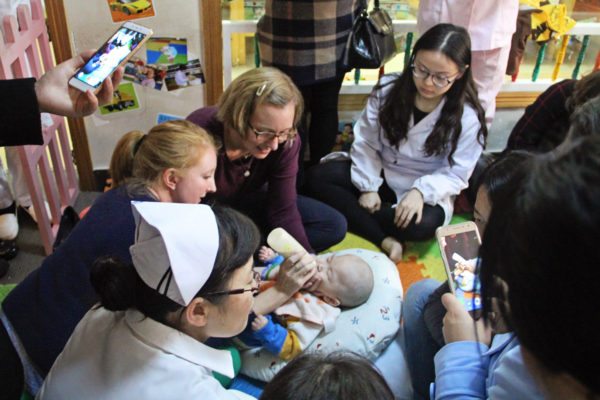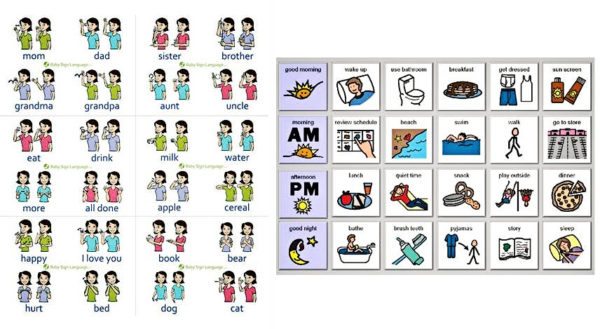You’ve dreamt for this day for months, years even. Planned for it, traveled halfway around the world for it and played it out in your mind a million times. And yet, the reality of becoming a family through adoption is undoubtedly different.
What happens next depends much on how you, as the adoptive parent, process the discrepancy between expectation and reality.
Do you take that initial rejection personally?
Do you panic at un-met milestones?
Does your commitment feel suffocating when the reality of orphanage life is staring you in the face?
Preparing for Adoption is our focus for the next two months. It is our hope to help you be as ready as possible for that day – the day you’ve waiting and longed for – and all the days to follow.

We recently had a chance to ask Katie Beaton, a pediatric physical therapist, and Melissa Pouncey, a speech therapist, to share their insight on how adoptive parents can best prepare for the China trip and beyond.
Hey! I’m Katie Beaton, a pediatric physical therapist in Birmingham, Alabama. Since 2011 I have had the honor to be a part of medical teams who have traveled with Lifeline Children’s Services to complete medical evaluations in orphanages throughout China and advocating for children we met. I treat children post-adoption with a variety of physical special needs. And I am currently in the process of adopting a little girl from China!
Hi! I’m Melissa Pouncey, speech therapist also from Birmingham, Alabama. I’ve been able to treat many children post-adoption who have speech and feeding delays, and travelled twice to China to train caregivers in several orphanages in 2016. I’ve loved getting to train and coach families and caregivers in working towards communication and feeding goals, and I’m so thankful to share alongside Katie in this article.
We wanted to start by talking about some common delays that children in orphanages may face. Keep in mind that for every year a child is in an orphanage, there is likely to be a 6 month delay in their development for environmental reasons. Meaning, a child coming home at 3 years old may look more like an 18 month old in many ways, but especially socially and emotionally.
This may make it easier to understand some of your new child’s behavior and reasoning skills.
Motor delays:
Not walking (gross motor) or difficulty in grasping objects (fine motor) can be connected to your child’s limited opportunities to move freely in their environment. But motor delays that correspond with your child’s special need will be more common. Be sure you’re doing good research related to your child’s special need.
Language delays:
Even in your child’s native language, language delays are very common. Intentional language modeling in a child’s environment in essential to language development, and your child may not have had consistent language models. Language or speech delays will likely increase with age and length of stay in an orphanage (as opposed to placement in a foster family). A variety of special needs may also exhibit language delays in both your child’s native language and in English.
Feeding delays:
Feeding delays may also be present in your child. You might see your child feeling very emotional about food or eating quickly, but your child may also have trouble chewing or swallowing. Keep in mind that culturally, food and food presentation may be very different, and your child may be less independent than you expect, especially if they’re younger.
Developmental delays:
Development may look more delayed in country and for the first few weeks home, but as you build a relationship with your child and then begin learning in your home, you can be more clear about their strengths and weaknesses.

With this general information on delays in mind, here are some ideas on how to prepare:
Before You Travel
1. Seek out your medical and therapeutic community before you travel.
Your International Adoption Clinic will be a good medical resource, but if there isn’t one near you, be sure to find a pediatrician comfortable with international adoption.
In terms of therapists, if your child’s special need has known delays, look into finding therapists related to those needs. Be sure to seek out therapy centers that understand and are trained in attachment based therapy, and use a family training model. You should always be present for therapy sessions with your child.
2. Know your insurance coverage related to your child’s special need.
You may have a limited number of therapy visits per year, or you may not have therapy coverage at all. Be sure you know what services your insurer will cover so you can better prepare for what your child may need.
3. Get to know your local school system and Early Intervention systems.
Know how you refer for services at school should your child need them, and begin building relationships with the special education team.
4. Do your research.
Dedicate time and energy to research your child’s special need and reach out to the communities of parents in your area and online related to that special need. Other families can be an amazing support and resource!
In Country
What to bring:
Toys that your child may love that are simple and can be played with in a variety of ways:
– stacking cups
– bubbles
– a beach ball
– books
– simple games for older children
Puffs or simple snacks to give your child as your get to know one another. (Snacks are a great way to bond!)
What to expect in country and some practical ideas:
Because of a language delay or a language barrier, your child may struggle with transitioning between activities. They may tantrum and fall apart when one activity ends or another begins, or moving from place to place. Your child is not exhibiting defiance – approach this type of tantrum by preparing them. You can use your guide to learn some simple words for what is coming next, or you can use some pictures to represent what’s coming next.
Give your child an understanding of what you’re going to be doing each day. They may struggle adapting to a new routine, and may need to have some picture aids in doing this. Below is an example of what that might look like. You can use single words to talk about what’s happening so they feel comfortable.
Use repetitive and consistent language when talking with your child. If your child is under three, you might want to supplement your language with some simple signs. You can just use the sign yourself as you repeat a single word, giving your child a gesture to use instead of trying to imitate a word in a new language.
If your child is age 3-5, you may want to use signs, but also some pictures to give your child a way to ask for what they want. If your child is older than 5, pictures may be your best bet. See below for examples of each.
Give your child plenty of time and space to explore on their own (within your room and safe areas). Follow their lead and go slow in making demands. They are getting to know you, and likely don’t understand what you’re telling them. You can establish more regular routines and expectations at home but, in country, keep your expectations low and read their cues for when you need to lower them even more. Your child may be overwhelmed, and you need to be prepared to change your plans based on their needs.
Your child may never have had a bath before, and may struggle with the idea of taking clothes off and taking a bath. Avoid pushing this boundary, and wait until they are ready for this activity. Follow their lead. You can help them understand by showing them what will happen, and by playing in the water together. Make it fun and enjoyable- not stressful and full of expectations.
Finally, know that some of what happens in country is related to trauma. Use calming techniques and calm voices, and wait until you get home to begin teaching and healing together.
Homecoming and Beyond
When and How to Ask for Help:
For children with medical special needs, connect with your medical community immediately to establish care and timelines for procedures.
For concerns related development, wait at least 3 months to decide if you need therapeutic intervention. Your child needs time to bond and build relationship with you, and you need to be connected with your child to benefit the most from a therapeutic relationship.
Be sure your therapist respects attachment boundaries and is educating you on how to help your child, if you do decide therapy is needed.
If therapy is needed, begin with your pediatrician or International Adoption Clinic for assessment and referrals. An assessment can tell you what areas your child is delayed, and your medical professional may have good advice about whether to wait or seek services.
Depending on their delay and age, a referral may be made to outpatient therapy or to Early Intervention (for children under 3) or your local school system (for children over 3).
Blessing and love on your journeys to adopt a child – the journey may have challenges, but it is so worth it!
Our emails are linked below, please use us as a resource if you have questions!
– guest post by Katie Beaton and Melissa Pouncey
 United Ability provides innovative services connecting people with disabilities to their communities and empowering individuals to live full and meaningful lives.
United Ability provides innovative services connecting people with disabilities to their communities and empowering individuals to live full and meaningful lives.


























I have often heard the formula, for every year in the orphanage you can expect a six month delay.
Do you have a source for this fact?